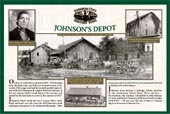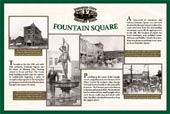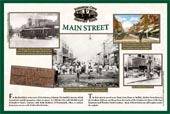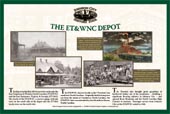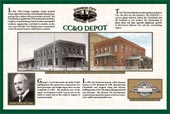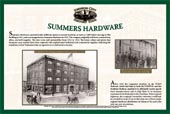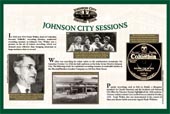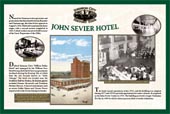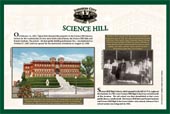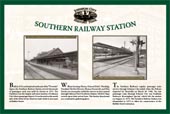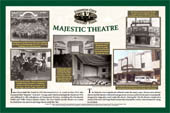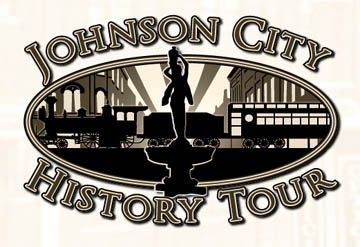 |
Visit the New Markers!
Downtown Johnson City
Travel Galleryavel Agency
Dedication of Historic Markers
ABOUT THE Event
In 2009, the Washington County Economic Development Council in partnership with the Johnson City Arts Council received grants from the Tennessee Department of Economic and Community Development for a Main Street Innovation Grant and from the Harris Fund for Washington County for the development of interpretive historic markers. The markers feature original photographs provided by East Tennessee State University's Archives of Appalachia. and were designed by Sunsyne Graphics of Johnson City.
On Saturday March 12, 2011 at 11:00 a.m. at Fountain Square in Downtown Johnson City (in front of Freiberg's Restaurant) a walking tour/ dedication of the new historic markers was initiated. Historians Bob Cox, Ashleigh Bunn and Alan Bridwell served as guides highlighting over 150 years of Johnson City's journey from a village to a major city.
Background
Johnson City, Tennessee without question was historically (and still is) a railroad town. Three railroads crossing in the middle of the downtown area propelled Johnson City from a village of 600 people in 1880 to the fifth largest city in Tennessee with a population of over 25,000 in 1930.
In Tennessee, the four largest cities, Memphis, Nashville, Knoxville, and Chattanooga all formed at strategic river locations since river transport was the primary means to move goods inland in the early 19th Century. Jonesborough, Greeneville and other Northeast Tennessee towns lacked the river ports for major growth and basically served as staging areas for westward migration. The State of Tennessee grew in population from around 35,000 to over one million from 1790 until 1850 and Tennessee was one of the most prominent states in the Union prior to the Civil War.
Then came the railroads….. Johnson City was essentially born in the last quarter of the nineteenth century when there were visions of a “New South” in which the former disloyal southern states became part of the industrial revolution and built economic strength no longer based on agriculture. Development of the railroad system was the missing element in tapping the natural resources (primarily timber and minerals) and breathtaking scenery of the Appalachian/Blue Ridge Mountain region.
Lacking the advantages of rivers for transport, Washington County aggressively supported railroad expansion as a way to “level the playing field” and take full advantage of the new “iron horse” that was changing America. Along the way, a village known as "Johnson's Depot" and "Johnson's Tank" became the rail crossroads for a large territory covering east Tennessee and western North Carolina. Johnson City experienced the full throttle development of railroad related industries and trade area expansion.
The new historic markers document places and events critical to Johnson City's development including: founding father Henry Johnson, three great railroads, entertainment venues, and Science Hill, the city's hub for local education.
